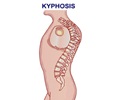A new study has found that more patients are tested and treated for osteoporosis when fracture clinics have someone dedicated to screening for the bone disease.

Researchers at St. Michael's Hospital led by Joanna Sale, a clinical epidemiologist, reviewed osteoporosis screening and management programs involving patients treated for fragility fractures by orthopedic staff in 11 countries.
The study, published in the journal Osteoporosis International, was unusual in that it examined both randomized trials and clinical programs available to all patients.
"We found that patient outcomes were better with programs that had dedicated personnel to test for and treat the disease," said Sale, an associate scientist in the hospital's Mobility Program Clinical Research Unit.
"A fracture clinic is a very busy place. Patients are in pain. You have orthopedic surgeons, residents, physiotherapists, orthopedic technicians. It makes sense to have someone who can identify patients who might have osteoporosis, educate them, refer them for a bone mineral density test, schedule them for the test and write a prescription.
"Outcomes are also better when the test or treatment takes place within the program, rather than sending the patient elsewhere and potentially losing contact with them."
Advertisement
Osteoporosis is a disease characterized by low bone mass and deterioration of bone tissue. This leads to increased bone fragility and risk of fracture, particularly of the hip, spine and wrist. Many people are not aware they have osteoporosis until they suffer a fracture and are tested for the condition.
Advertisement
St. Michael's was perhaps the first hospital in Ontario to screen and educate all patients over 50 with a fragility fracture (suffered in a fall from standing height or less, such as slipping n ice) for osteoporosis and send them for a BMD test. The program, led by Dr. Earl Bogoch and Victoria Elliot-Gibson, runs out of the fracture clinic.
The Ministry of Health and Long-Term Care has initiated a similar program in 36 other fracture clinics across the province as part of the Ontario Osteoporosis Strategy. A team at St. Michael's led by Dr. Bogoch and Dr. Dorcas Beaton is leading the evaluation of this program and researching ways to make post-fracture care better.
Source-Eurekalert













